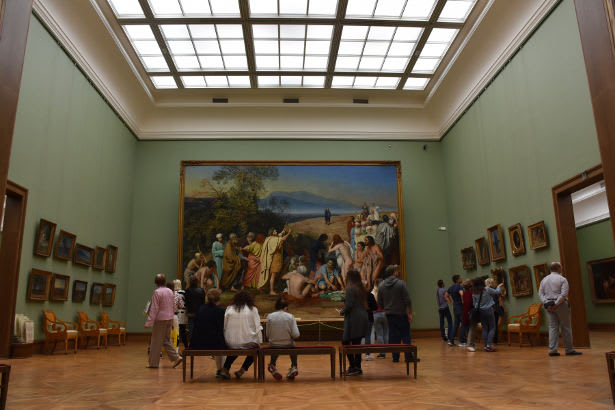The Moscow Kremlin
Address:
The Moscow Kremlin is a historic fortified complex in the heart of Moscow. It is situated on Borovitsky Hill, where the Neglinnaya River flows into the Moskva River, commanding an imposing position above the surrounding landscape.

The Kremlin is flanked by the famous Red Square to the east, the Alexander Garden to the west, and the Moskva River to the south.
It serves as the official residence of the President of the Russian Federation and is an emblematic symbol of Russian political power and history.
The Moscow Kremlin Churches and Towers
Within the walls of the Moscow Kremlin, visitors can find an array of stunning churches and cathedrals, each with its unique architectural style and significance. Among the most notable religious structures are:
- The Cathedral of the Dormition (Uspensky Sobor), which was the main church of medieval Russia where emperors were crowned.
- The Cathedral of the Annunciation (Blagoveschensky Sobor), known for its golden domes and richly adorned interior.
- The Cathedral of the Archangel (Arkhangelsky Sobor), the burial place for many Russian tsars and princes.
Aside from the cathedrals, the Kremlin is also known for its impressive towers, which were initially built for defense purposes. Some of the famous towers include:
- The Spasskaya Tower, which is perhaps the most famous one, featuring the Kremlin clock and serving as the official entrance.
- The Trinity Tower, which is the tallest tower and serves as a public entrance to the Kremlin.
- The Ivan the Great Bell Tower, an iconic symbol of the Kremlin that has dominated Moscow's skyline for centuries. Each tower has its architectural features and historical significance, adding to the grandeur and complexity of the Kremlin complex.
The Moscow Kremlin History
The history of the Moscow Kremlin is deeply intertwined with the history of Russia itself. The site has been inhabited since the 2nd millennium BC, and the city of Moscow started to take form around the Kremlin in the 11th century AD.
The Kremlin's current appearance largely dates back to the late 15th and early 16th centuries when Italian architects were invited to construct new defenses and cathedrals under the reign of Ivan III (Ivan the Great).
Throughout its history, the Kremlin has been the residence of Russian tsars, the seat of the Russian Orthodox Church, and the center of political power. It has withstood invasions and destruction, being rebuilt and expanded several times.
After the Russian Revolution in 1917, the Kremlin became the headquarters of the Soviet government, and its walls witnessed many significant events of the 20th century.
Following the fall of the Soviet Union, the Kremlin continued to function as the pinnacle of Russian political authority, housing the offices of the President of Russia.
The Moscow Kremlin has also been recognized as a UNESCO World Heritage site since 1990, due to its exceptional cultural and historical value.
Visitors to Moscow often consider the Kremlin a must-see destination for its stunning architecture, museums, and as a testament to Russia's complex and fascinating history.


